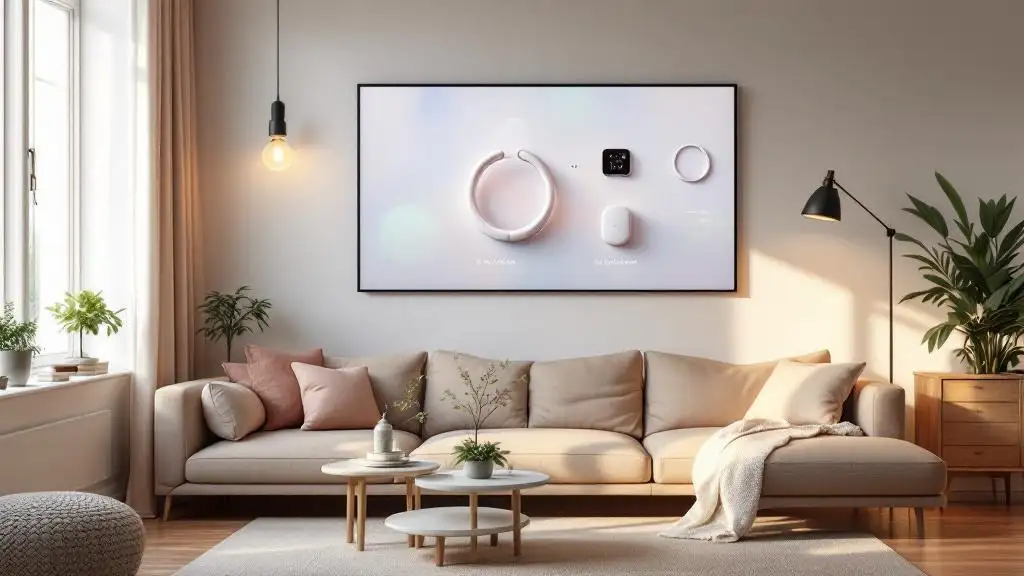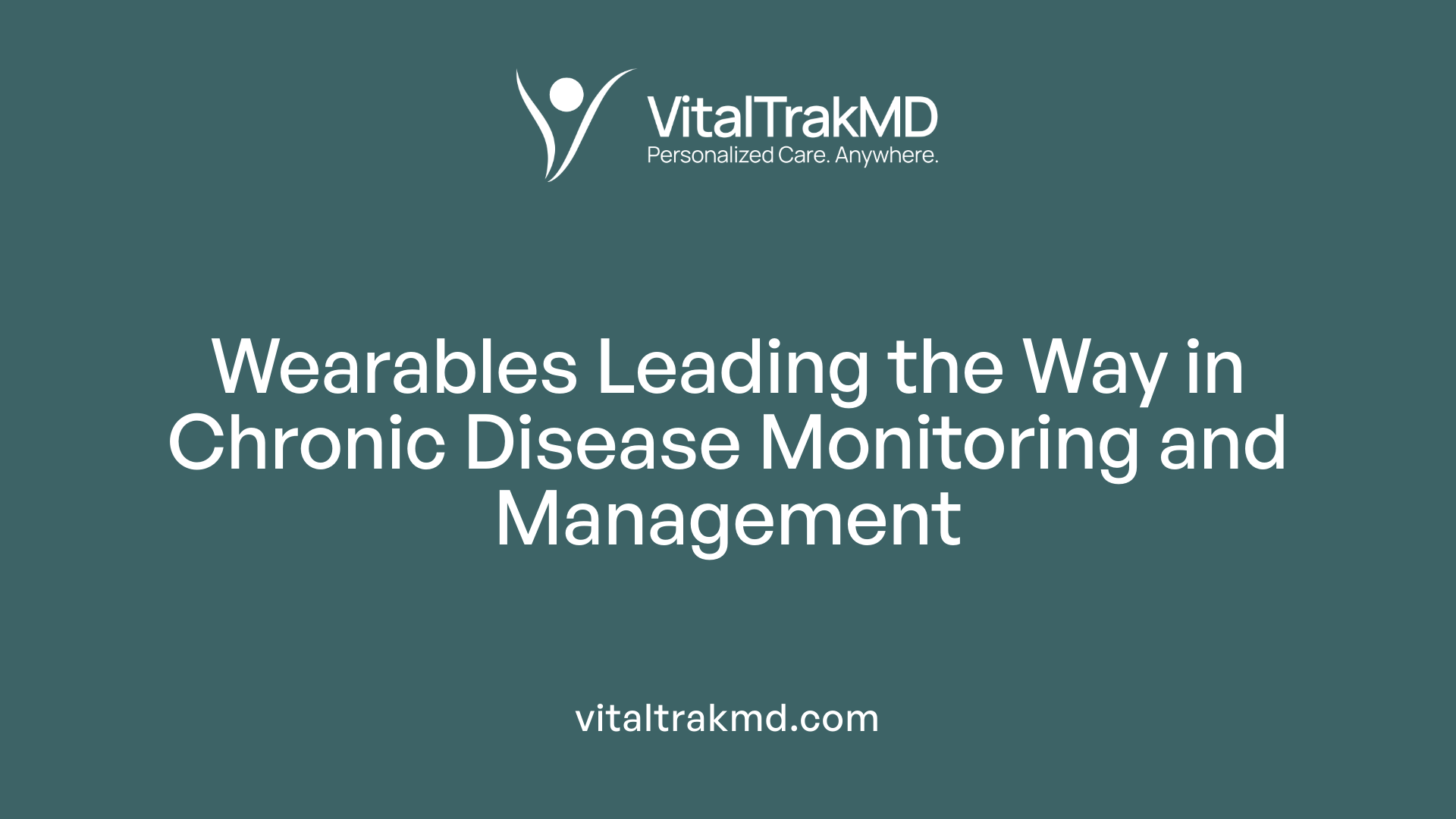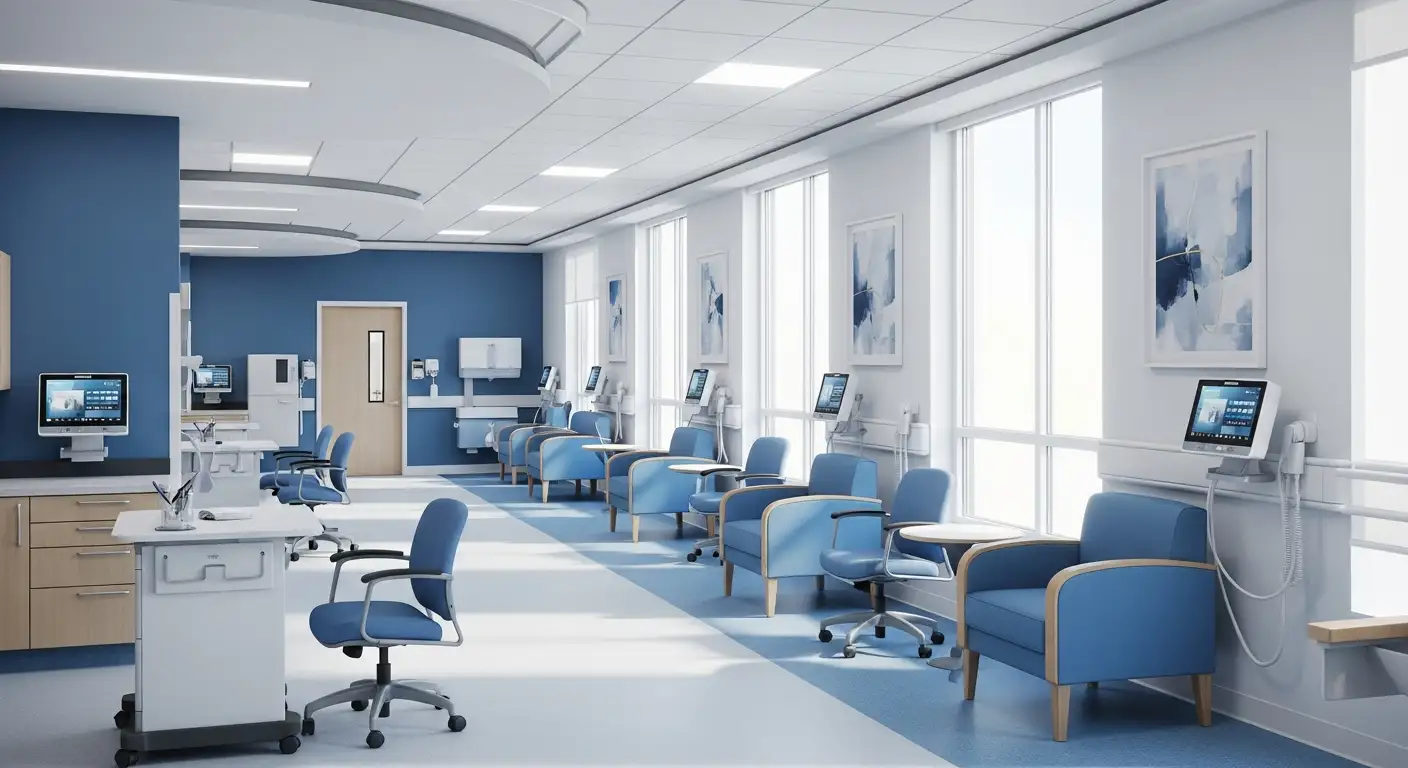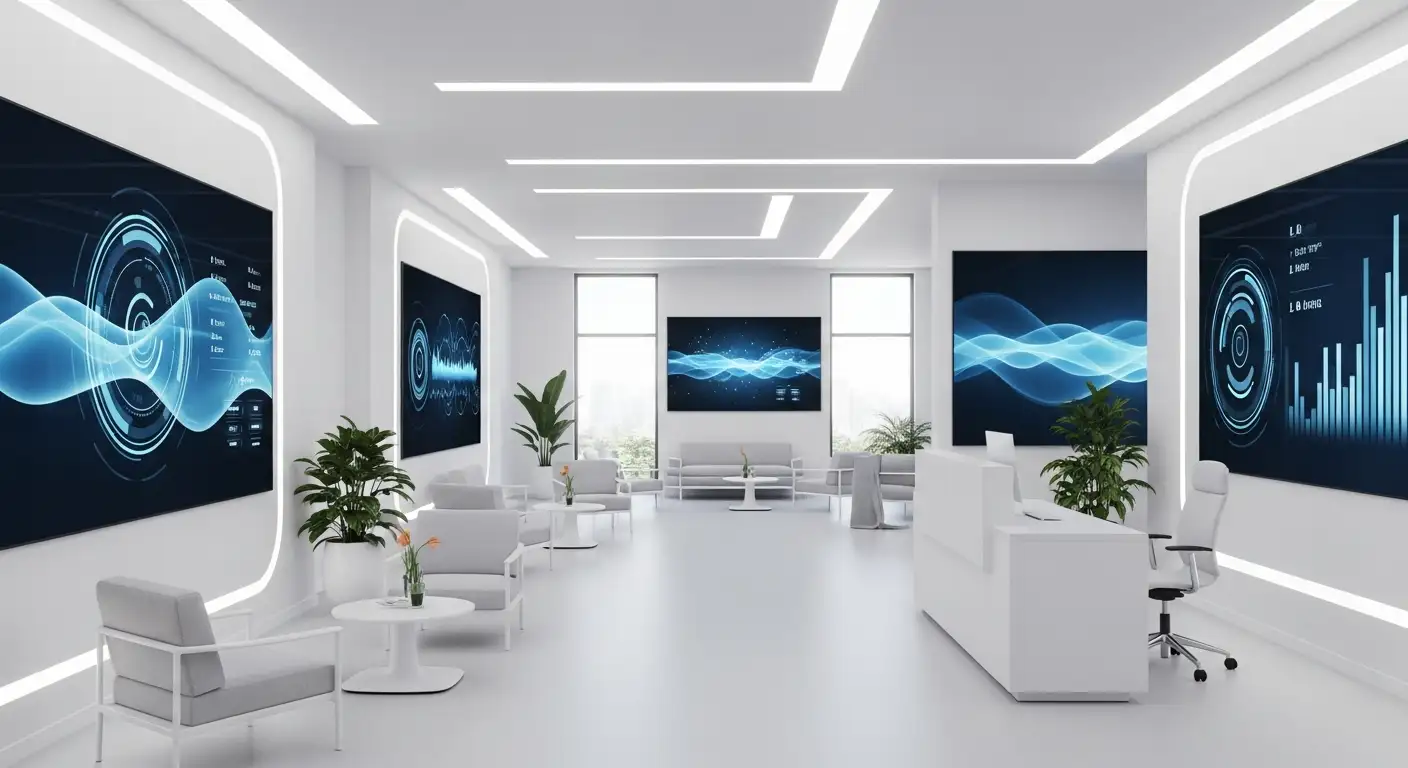Wearables’ Role in Managing Chronic Conditions in Seniors

Harnessing Technology for Better Senior Health Management
As the global population ages, the adoption of wearable technology emerges as a transformative approach in managing chronic conditions among seniors. These devices, ranging from fitness trackers to advanced health monitors, offer continuous, real-time data that enables proactive healthcare interventions, promotes independence, and enhances quality of life for elderly individuals. This article explores the types, functionalities, benefits, challenges, and future trends of wearable devices tailored for senior health management, highlighting their vital role in addressing the rising healthcare needs of the aging population.
Diverse Types and Functions of Wearables for Seniors' Health

What are the different types and functionalities of wearable devices used for seniors with chronic illnesses?
Wearable devices for seniors with chronic illnesses come in numerous forms, each designed to meet specific health management needs. Common types include fitness trackers, smartwatches, medical alert devices, patches, rings, and specialized clothing with embedded sensors.
Fitness trackers and smartwatches are popular options that monitor activity levels, heart rate, sleep patterns, and blood oxygen saturation. These devices motivate seniors to stay active, track their progress, and provide reminders to encourage healthy behaviors.
Medical alert devices and panic buttons enable rapid emergency contact, often featuring GPS location tracking and fall detection technology. When a fall occurs or if the senior presses a button, these devices can automatically alert caregivers or emergency services, enhancing safety.
Continuous health monitoring patches and rings are used for more specific metrics such as glucose levels for diabetics, blood pressure, and ECG readings. These provide real-time data directly to healthcare providers or linked smartphones for ongoing assessment.
Functionality encompasses vital sign tracking, fall detection, medication adherence reminders, and remote health monitoring. Some devices also feature biometric sensing for temperature, respiration, and activity level, supporting early detection of health issues.
Many advanced wearables integrate with broader smart home systems and telehealth platforms. These allow seamless data exchange, personalized care adjustments, and remote patient monitoring, favoring an independent and proactive approach to health management.
Design focus has shifted towards user friendliness, with intuitive interfaces, long battery life, and comfort being priority areas. The continuous evolution of wearable technology ensures that these devices become more reliable, discreet, and supportive of comprehensive senior care.
Overall, these wearables enhance safety, foster independence, and enable timely medical intervention, making them invaluable tools in managing chronic conditions among older adults.
Empowering Seniors Through Health Promotion and Disease Prevention

How do wearable devices support health promotion and disease prevention among seniors?
Wearable devices play a crucial role in encouraging health and preventing diseases in older adults. They continuously monitor vital signs like heart rate, blood pressure, oxygen saturation, and activity levels, providing real-time data that helps detect early signs of health issues. By tracking habits such as sleep patterns and daily movement, wearables enable timely interventions, reducing the risk of conditions worsening.
For seniors managing chronic diseases like hypertension and diabetes, wearables offer personalized insights and remote monitoring capabilities. For example, continuous glucose monitors and smartwatches empower users to keep their blood sugar and blood pressure within target ranges, while alerting healthcare providers to potential problems. This proactive approach facilitates early treatment adjustments, helping avoid complications.
Safety is another critical aspect. Many wearables include fall detection sensors, GPS location tracking, and medication reminders, which support independence and reduce emergency response times. They encourage physical activity through goal setting, progress tracking, and motivational prompts, ultimately improving mobility and cardiovascular health.
Additionally, wearables foster social interaction via messaging and virtual calls, helping combat loneliness. The data collected can be integrated with healthcare systems, enabling personalized care plans and early diagnosis of conditions such as respiratory or cardiac ailments.
Looking ahead, ongoing innovations aim to enhance device comfort, extend battery life, and incorporate AI to provide predictive health insights. These advancements hope to support sustained long-term use, making wearable technology a vital tool for aging populations.
In summary, wearables empower seniors by promoting healthier lifestyles, enabling early detection of health issues, and supporting chronic disease management, which together improve quality of life and independence.
The Role of Wearables in Chronic Disease Management for Seniors

Monitoring vital signs and health metrics in chronic illnesses
Wearable devices are revolutionizing how we track health, especially for seniors managing chronic diseases. These gadgets continuously monitor vital signs such as heart rate, blood pressure, oxygen saturation, and blood glucose levels. For example, diabetics can benefit from continuous glucose monitors that lower hypoglycemia episodes and improve management satisfaction. Similarly, fitness trackers and smartwatches help monitor activity levels, sleep patterns, and physiological data, providing a comprehensive picture of an individual’s health status.
In conditions like hypertension and cardiac issues, wearables can detect arrhythmias and abnormal heart rhythms early, prompting timely medical intervention. For respiratory conditions like asthma and COPD, they can track critical parameters such as oxygen uptake and breathing patterns, enabling better management and preventing exacerbations.
Enabling patient engagement and self-management
Wearables empower seniors to take an active role in their health through self-monitoring and habit formation. They facilitate real-time feedback on activity, sleep, and medication adherence, motivating healthy behaviors. Features like medication reminders, activity goals, and stress reduction tools—such as biofeedback and guided breathing—support mental and physical well-being.
Additionally, wearables can support rehabilitation, such as upper limb recovery after strokes or improving balance to prevent falls. Their ability to log data and provide feedback encourages users to maintain consistent health routines, reducing hospital readmissions and complications.
Clinical decision-making and personalized care
Healthcare providers leverage data collected by wearables to make more informed, personalized decisions. This continuous flow of real-time data allows clinicians to adjust treatment plans promptly, especially for complex conditions like Parkinson’s disease, diabetes, and cardiac arrhythmias. Integration of wearable data with electronic health records and health management platforms helps create a tailored approach to each patient.
Despite their promising benefits, challenges such as data accuracy, privacy concerns, and user engagement remain. Overcoming these issues involves ongoing technological improvements, better user education, and policy support.
| Application Area | Devices Used | Health Metrics Monitored | Benefits | Challenges |
|---|---|---|---|---|
| Cardiology | Smartwatches, ECG patches | Heart rate, rhythm, blood pressure | Detect arrhythmias, monitor hypertension | Data accuracy, privacy |
| Respiratory | Patches, smart inhalers | Oxygen saturation, respiration rate | Manage asthma, COPD | User adherence |
| Diabetes | Continuous glucose monitors | Blood sugar levels | Improve glycemic control | Cost, device reliability |
| Neurology | Seizure sensors, Parkinson’s wearables | Seizure activity, motor symptoms | Early detection, symptom management | Data interpretation |
| Senior Safety | Fall detection devices, GPS trackers | Movement, location | Prevent falls, monitor wandering | Battery life, usability |
Wearable health devices hold the potential to transform management of chronic illnesses among seniors. By enabling continuous health monitoring, fostering active engagement, and supporting personalized clinical care, they pave the way for improved health outcomes and enhanced quality of life.
Monitoring Key Health Metrics in Elder Care
What are the key health metrics monitored by wearable devices in seniors, such as vital signs, fall detection, and sleep management?
Wearable devices designed for older adults are equipped to continuously monitor important health indicators. These devices track vital signs such as heart rate, blood pressure, blood oxygen saturation (SpO2), respiratory rate, and body temperature. This real-time data collection allows healthcare providers to observe physiological changes that may signal emerging health issues, enabling early intervention.
In addition to vital signs, wearables monitor physical activity levels, including step count, calories burned, and exercise duration. This feature encourages seniors to stay active, which is crucial for maintaining mobility, strength, and overall health.
Fall detection sensors are a critical safety feature in elder care wearables. Utilizing accelerometers and advanced classification algorithms, these sensors can recognize sudden, unusual movements indicative of a fall. Once detected, the device promptly sends alerts to caregivers or emergency services, facilitating quick assistance and potentially preventing serious injuries.
Sleep quality is another vital aspect monitored by these devices. They analyze sleep patterns and disruptions such as insomnia or sleep apnea, providing insights into sleep health and guiding improvements. Many wearables also include emergency alert functionalities, allowing seniors to call for help during medical emergencies or safety concerns.
Collectively, these technological features support early detection of health problems, help manage chronic diseases, and promote independence. Remote health monitoring through wearables ensures personalized care adjustments, reduces hospital visits, and enhances the safety and well-being of older adults.
Understanding Challenges and Limitations of Wearables for Seniors
What are the challenges, risks, and limitations associated with using wearable technology for seniors' health monitoring?
Wearable devices hold great promise for enhancing health management among seniors, offering continuous monitoring of vital signs and activity. However, several obstacles hinder their widespread and effective use.
One primary concern is data privacy and security. Since wearables collect sensitive health information, protecting this data from breaches and unauthorized access is crucial. Incidents of data leaks can erode trust and pose risks to users.
User engagement and digital literacy are also significant issues. Many seniors may find complex device interfaces challenging, leading to difficulties in proper usage. This can result in inaccurate data collection or even abandonment of devices altogether.
Device accuracy and reliability are critical for health monitoring. Factors such as calibration errors, motion artifacts, and device malfunctions can compromise data quality. If data are inaccurate, healthcare providers might make misguided decisions, potentially jeopardizing patient safety.
Design limitations further complicate the effective use of wearables. Devices need to be durable, waterproof, comfortable, and unobtrusive to ensure consistent wear over long periods. Technological constraints like short battery life and small form factors can reduce usability.
Accessibility and cost barriers also restrict the reach of wearable health technology. High device costs may exclude socioeconomically disadvantaged seniors. Additionally, disparities in access to reliable internet or technical support can prevent effective implementation, especially in underserved communities.
Regulatory and standardization issues can delay the integration of wearables into healthcare systems. Variability in device quality and lack of regulatory oversight may lead to inconsistent performance.
In summary, while wearable devices offer transformative potential for senior health management, addressing these challenges—ranging from privacy, usability, accuracy, and affordability—is essential for maximizing their benefits and ensuring safety. Ongoing innovation and regulatory efforts are necessary to overcome these limitations and enhance the reliability and accessibility of wearable health technology for aging populations.
Research and Future Trends in Wearable Elder Care Technology
What does research evidence say about the effectiveness of wearable technology in managing chronic conditions in seniors?
Research on wearable devices indicates they hold significant promise for improving the management of chronic illnesses among older adults. These devices enable continuous monitoring of vital signs such as heart rate, blood pressure, blood oxygen saturation, and activity levels, which are crucial for early detection and intervention.
However, despite the encouraging potential, the current scientific evidence presents a mixed picture. Many studies highlight that wearables can support better health monitoring, promote physical activity, and facilitate remote healthcare delivery. For example, some cases show reductions in hospital readmission rates for heart failure patients and better glucose control in diabetes management.
Yet, a considerable challenge remains: the reliability and accuracy of many consumer-grade wearables are not consistently validated through rigorous clinical testing. This concern is especially critical for devices used in health decision-making for seniors, whose health conditions can be complex and sensitive to measurement errors.
Furthermore, the proliferation of unvalidated or poorly standardized devices raises safety concerns. Limited number of studies directly evaluating wearables' long-term efficacy specifically in elderly populations exists, and most evidence comes from small-scale or short-term trials.
Overall, the scientific consensus underscores the necessity for independent validation and clinical trials to confirm that these technologies can produce real, sustained health benefits reliably. While the potential is substantial, the adoption of wearable devices into mainstream elderly care should proceed cautiously, emphasizing evidence-based validation to maximize safety and effectiveness.
This underscores an ongoing need for further research, particularly large-scale, longitudinal studies focused on senior populations, to establish the true impact of wearable technology on health outcomes and health care costs in the long run.
Future Innovations and Trends in Wearable Health Technology
What are the future trends and innovations in wearable health technology for older adults?
The landscape of wearable health devices is expected to rapidly evolve to better serve older populations. One prominent development will be the integration of artificial intelligence (AI) into wearable systems. These AI-driven devices will analyze vast amounts of health data to generate personalized, actionable insights. For example, AI algorithms can predict health risks early, support proactive intervention, and enable tailored health recommendations.
Advances in sensor technology will further enhance the accuracy and scope of monitoring. Future wearables will measure a wider array of vital signs, mobility metrics, and sensory functions. This includes early detection of cognitive decline and mobility issues using biomarkers such as gait speed and balance. Such comprehensive monitoring supports early diagnosis and personalized care.
Design improvements will focus on making devices more user-friendly, comfortable, and aesthetically appealing to reduce stigma associated with health monitoring. Affordable hearables, for example, will not only improve hearing but also support sensory and communication functions, increasing accessibility for those with impairments.
Emerging wearable devices—such as smart glasses and vibrotactile belts—will aid individuals with sensory impairments by providing visual, auditory, or tactile feedback. These devices will help with cognitive well-being by delivering virtual coaching, activity reminders, and sleep tracking.
Integration with smart home systems and telehealth platforms will be crucial. Connected devices will enable continuous, holistic health monitoring while facilitating remote patient management. Such systems will help promote healthy aging, independence, and timely medical intervention.
Overall, these innovations aim to make wearable health technology more resilient, non-intrusive, and beneficial for older adults, ultimately supporting their health, safety, and quality of life.
The Future of Wearable Technology in Elderly Care
As wearable technology continues to evolve rapidly, its integration into senior healthcare systems promises to revolutionize chronic disease management by offering highly personalized, real-time health insights that support early intervention, safety, and independence. Overcoming current challenges related to data privacy, device accuracy, and user engagement will unlock new possibilities for improving health outcomes and quality of life among the elderly. Emerging innovations such as AI integration, advanced sensors, and seamless connectivity will make wearables more accessible, reliable, and capable of addressing the multifaceted needs of older adults. Ultimately, the ongoing development of wearable health technology holds the potential to transform elderly care into a more proactive, efficient, and compassionate practice—ensuring that seniors can enjoy healthier, more autonomous lives well into their advanced years.
References
- The Role of Wearable Devices in Chronic Disease Monitoring and ...
- Wearable Technology in the Management of Chronic Diseases
- Wearable Technology in the Management of Chronic Diseases: A ...
- The Role of Wearable Technology in Monitoring Senior Health
- Wearable Technologies for Health Promotion and Disease ...
- Wearables: A Game Changer in Chronic Disease Management
- Wearable technology for the elderly: Underutilized solutions
- How Technology Empowers Seniors to Manage Chronic Conditions ...
- Using Wearable Devices to Support Senior Health
- The Role of Wearable Monitoring Devices for Elderly in Chronic ...
Recent articles
Want to Feel Better and Live Healthier?
Join hundreds of patients taking control of their health with personalized care that fits their life – not the other way around.
Rated 4.8/5 by 32+ customers







